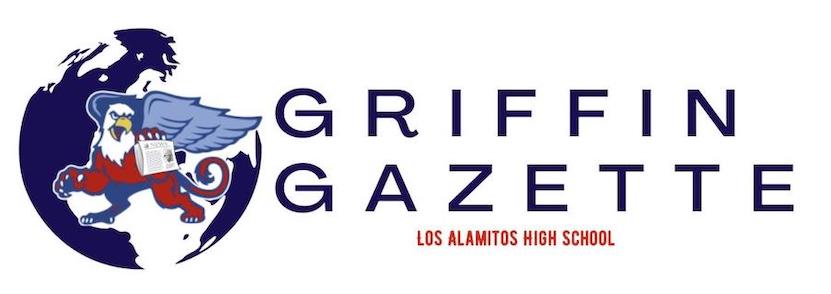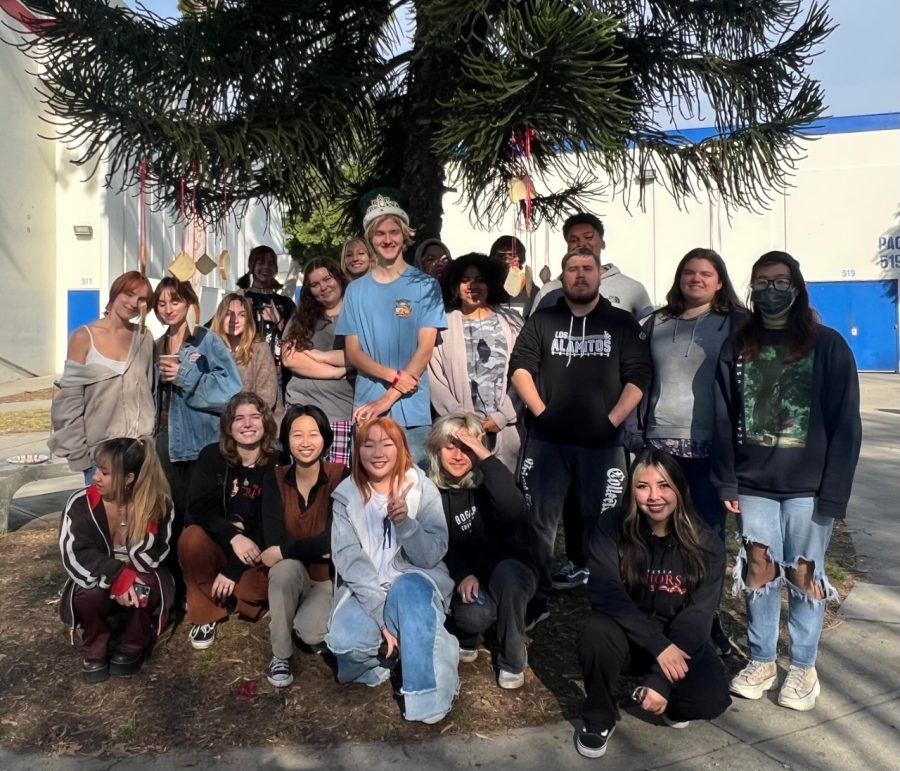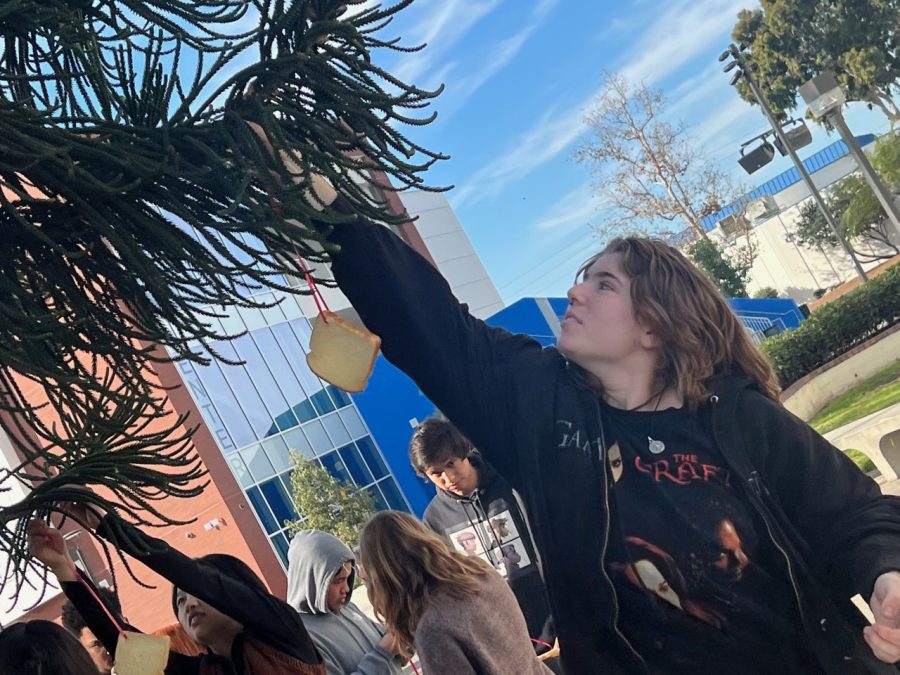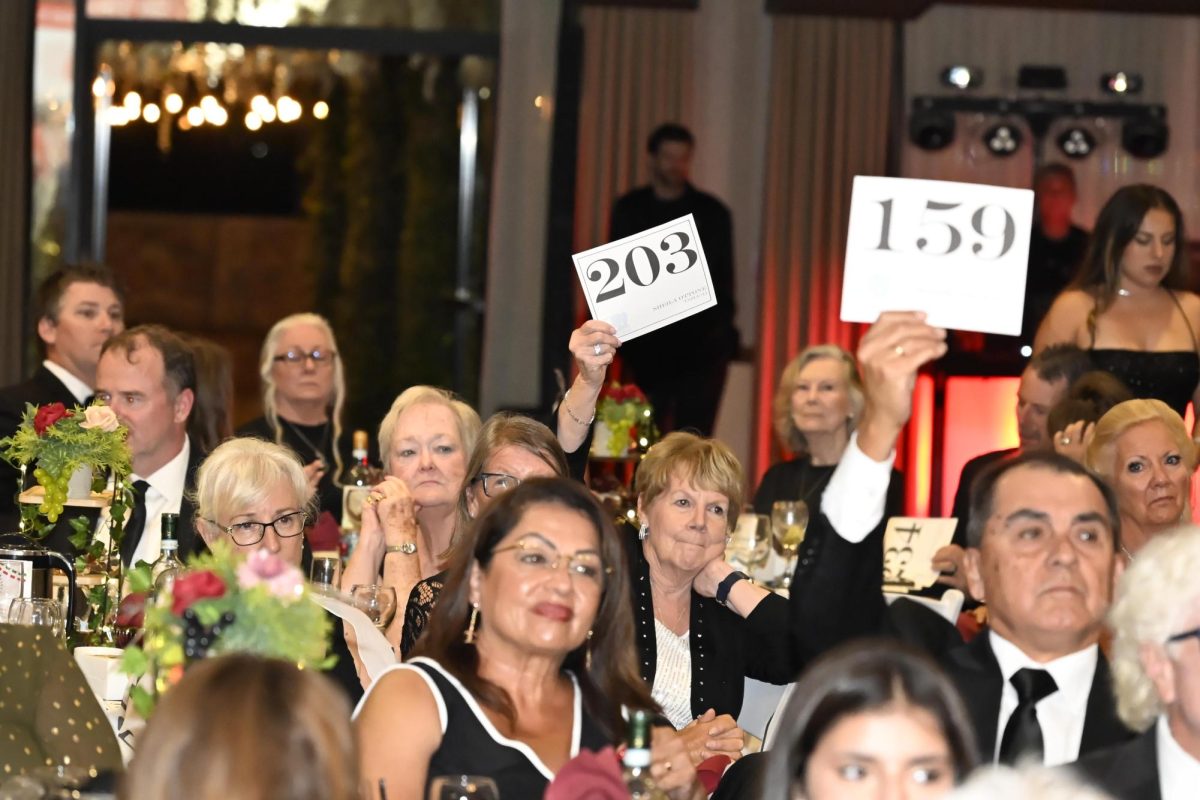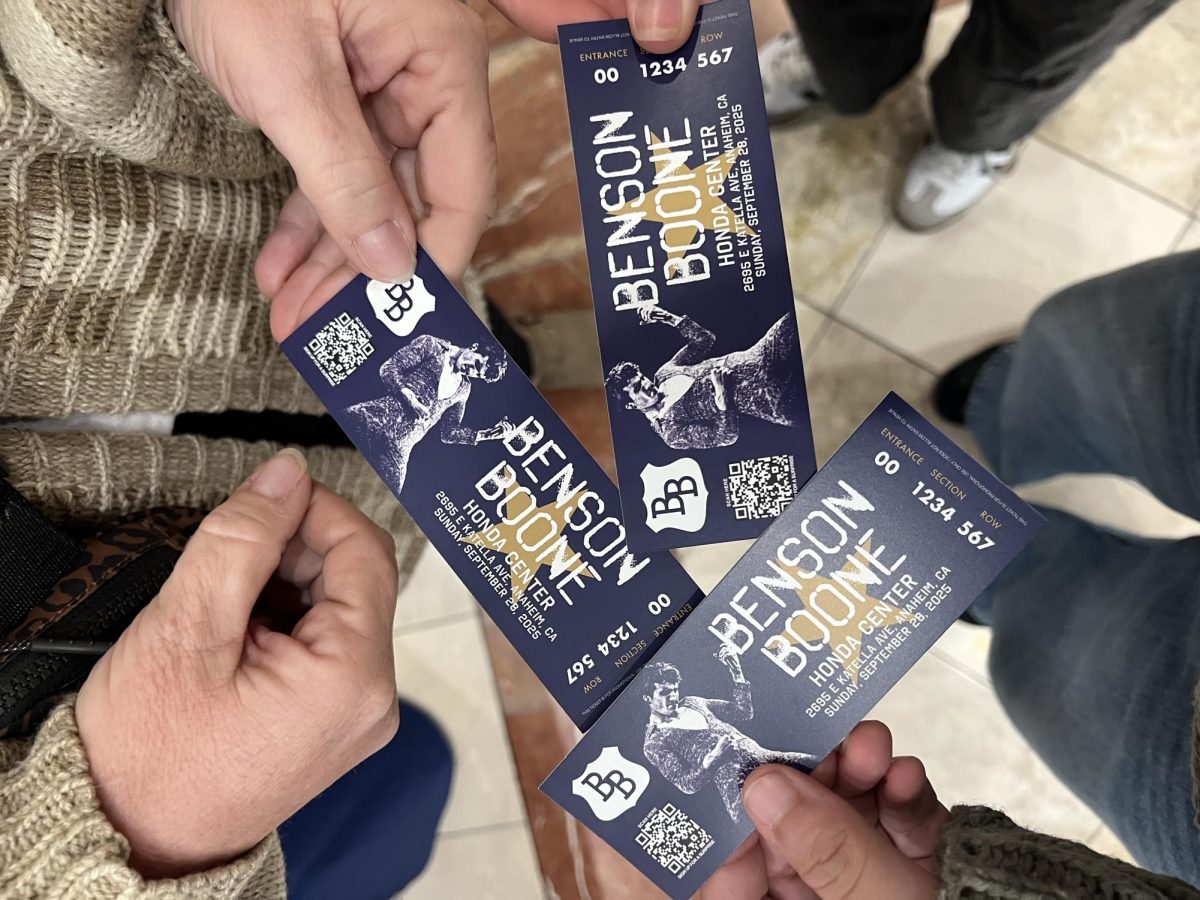Tree with hanging pieces of bread: What was that about?
The Mythology class decorated the evergreen by the PAC to illustrate Norse mythology
Los Al Mythology class 2022-23 gets together and celebrates Yule on school campus
December 21, 2022
LOS ALAMITOS, CA — It was an odd sight: On Friday, Dec. 16, pieces of white bread adorned the branches of the tree on the right side of the PAC. What is the purpose of this senior-prank-like display, and who put it up?
Mrs. Franzen’s Mythology class was responsible. Griffin Gazette has already done a spotlight on the Mythology and Folklore class, and this “Yule Tree” display is one of the many fun things a part of that class.
Most people have heard of the Yule Log Tree and its role in Christmas. However, most people do not know that most of the modern traditions surrounding Yule Logs originate from Scandinavian countries. The Mythology class ends the semester with studying Norse mythology. They organized a fun celebration last Friday.
“The celebration blended Norse and Old English traditions,” Mrs. Franzen said. “The Yule Log and tree is centered around the celebration of the hearth and the home.” Because winter was so harsh for the Scandinavian countries, a lot of the traditions are focused on improving the health of both nature and the population during winter. This specific practice is called the “feeding of the world tree.”
“The evergreen on campus is a symbolic replica of Yggdrasil – the world tree in Norse mythology,” Mrs. Franzen said, “We ‘fed’ the world tree with bread and juice to ensure the world tree makes it through the darkest part of the winter; to do so ensures our survival as we live in the tree, too.”
This practice has an extremely gruesome origin. “The Norse would take a slave, usually from Northern Europe,” Mrs. Franzen explained, “and sacrfice them by slitting their throats and hanging them upside down from the tree branches. The blood from the sacrificed slave ensures the health of the tree.”
Thankfully, this practice dissipated, largely due to the spread of Christianity. It was replaced by symbolic representations, such as hanging ornaments on trees instead. That is the origin of putting Christmas trees in homes. Even the Christmas colors green, red, and white symbolize nature, blood, and snow respectively.
Another tradition, which the Mythology class also did on Friday, is the sharing of food.
Winter was, of course, intensely fatal in the Scandinavian countries. “When we give gifts of food during the winter time, such as food gifts, or have gatherings, that is to ensure survival during the winter,” Mrs. Franzen explained regarding modern culture.
Each of the Mythology students brought food to share with other classmates, and they all feasted to celebrate the arrival of winter. Students brought brownies, Oreo cookies, chips (pita and potato), hummus, and much more.
The Mythology class also incorporated one final tradition: the Yule King of Misrule.
“Jakob Hirshberg was elected by the class to rule over the festivities,” Mrs. Franzen said. “This pulls from old Anglo-Saxon traditions. The King of Misrule takes the order of the day and turns it upside down so, Jakob was in charge.”
Overall, the Mythology students had a fun event that combined what they learned in class into a cohesive—and slightly strange—activity. Next semester, the Mythology and Folklore class will shift into the Thanatology class, which is the study of death and dying.

